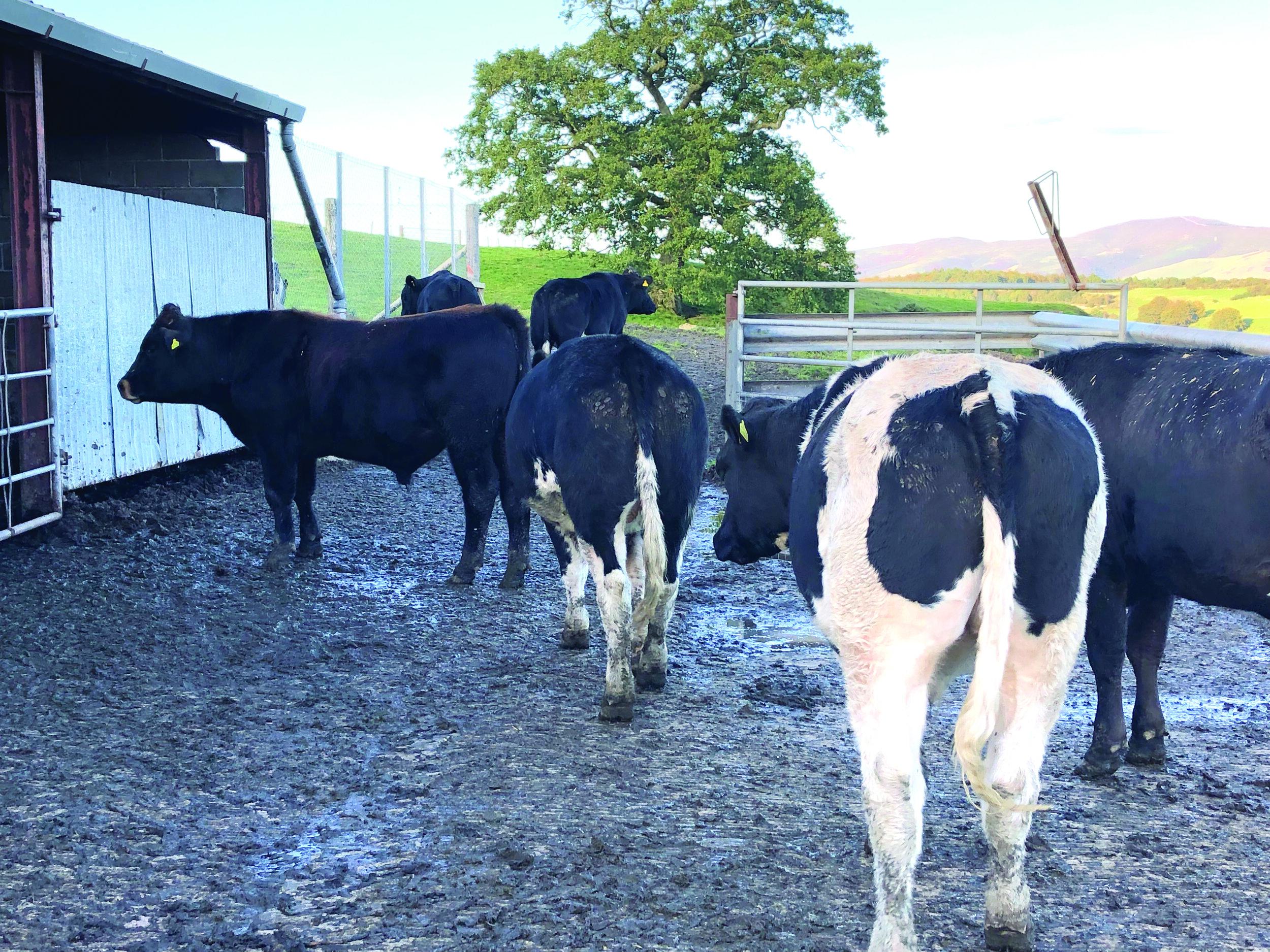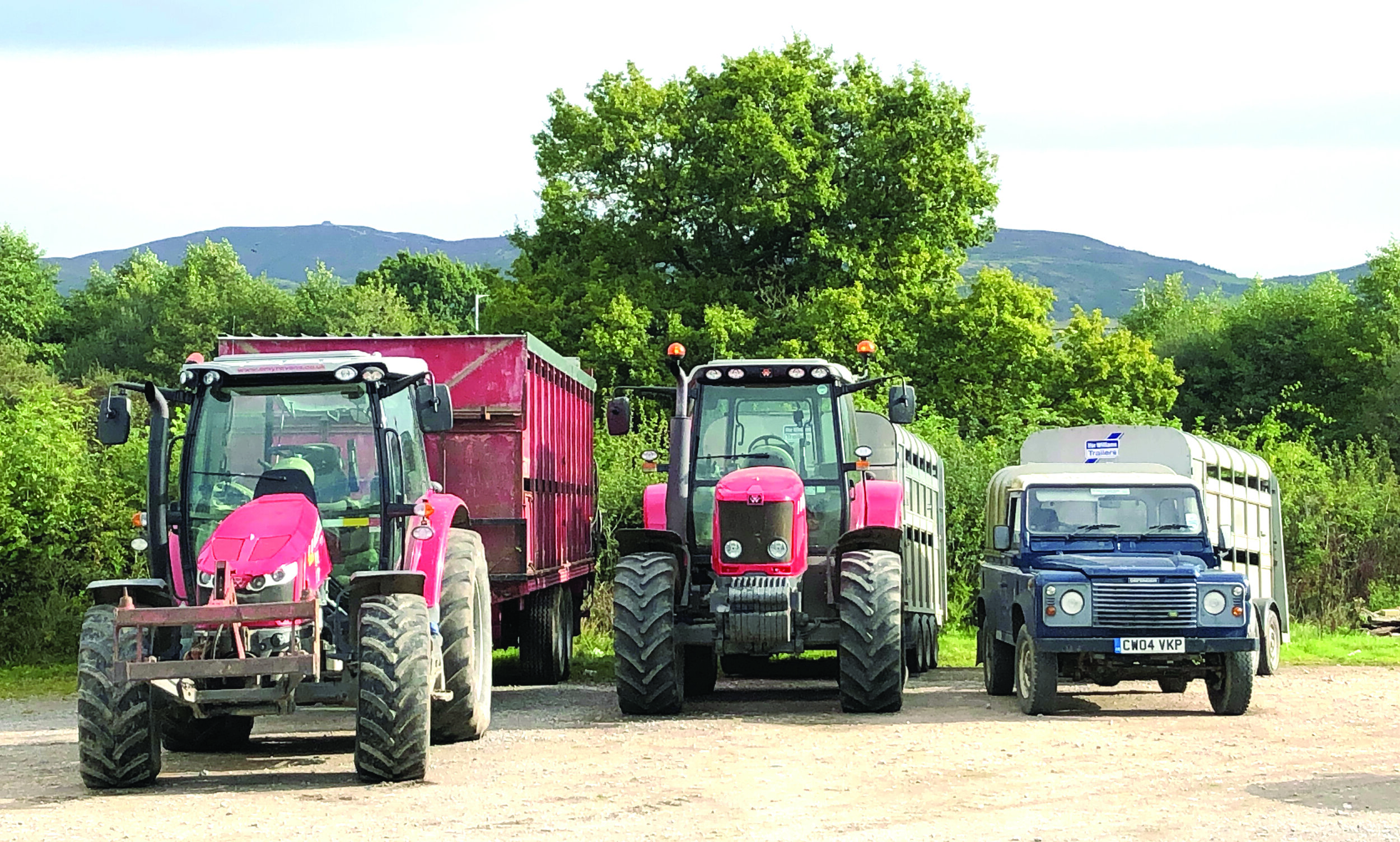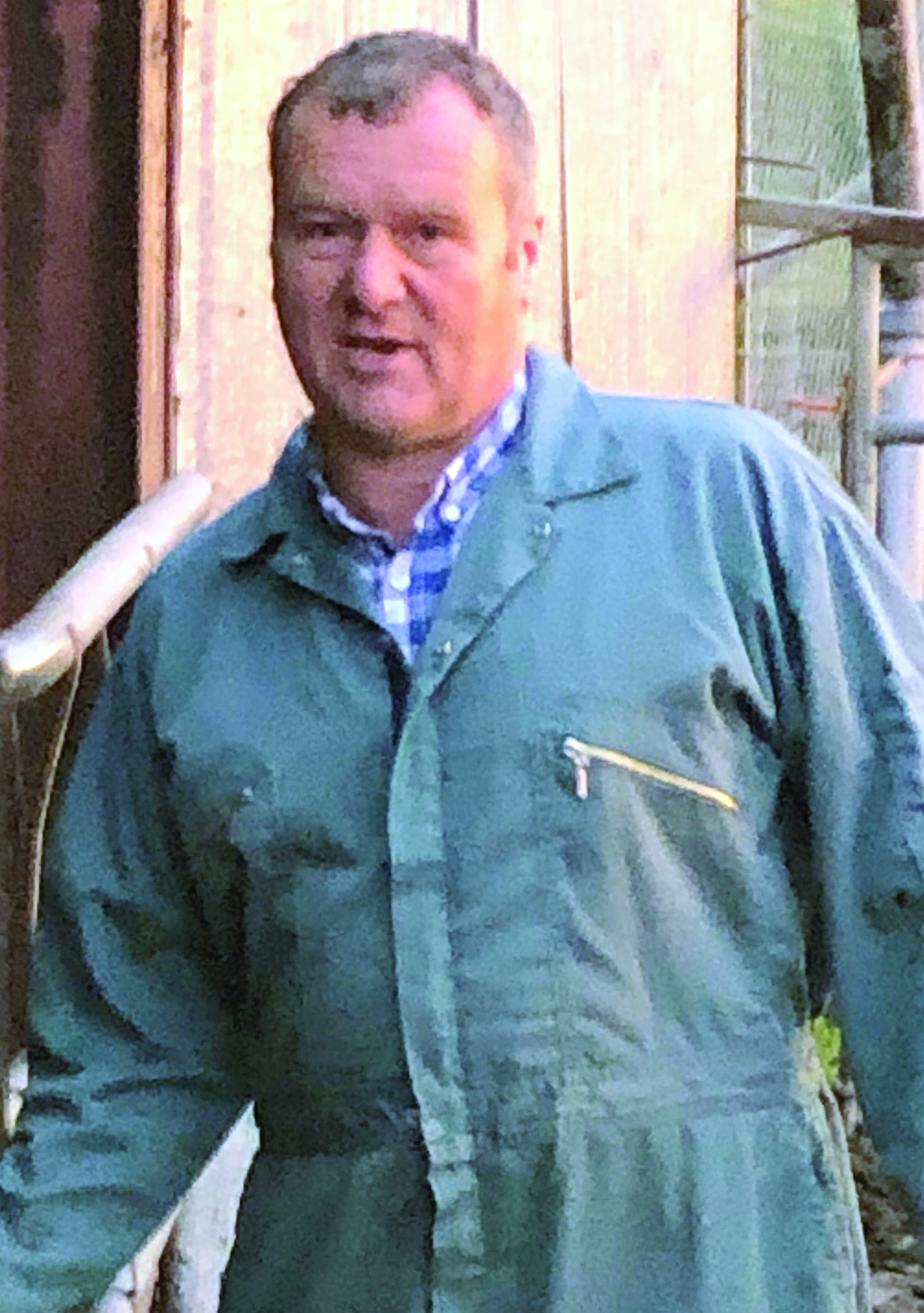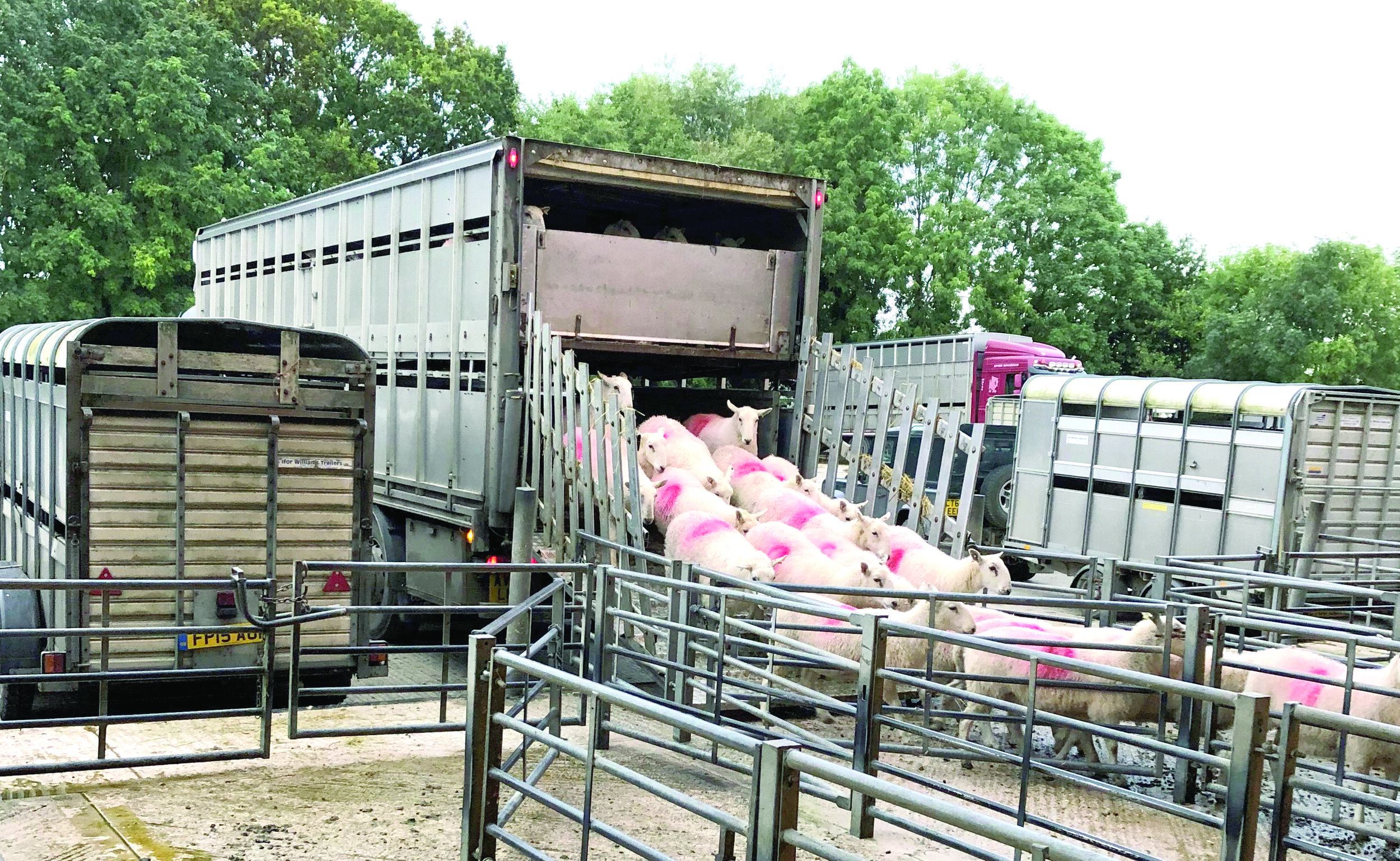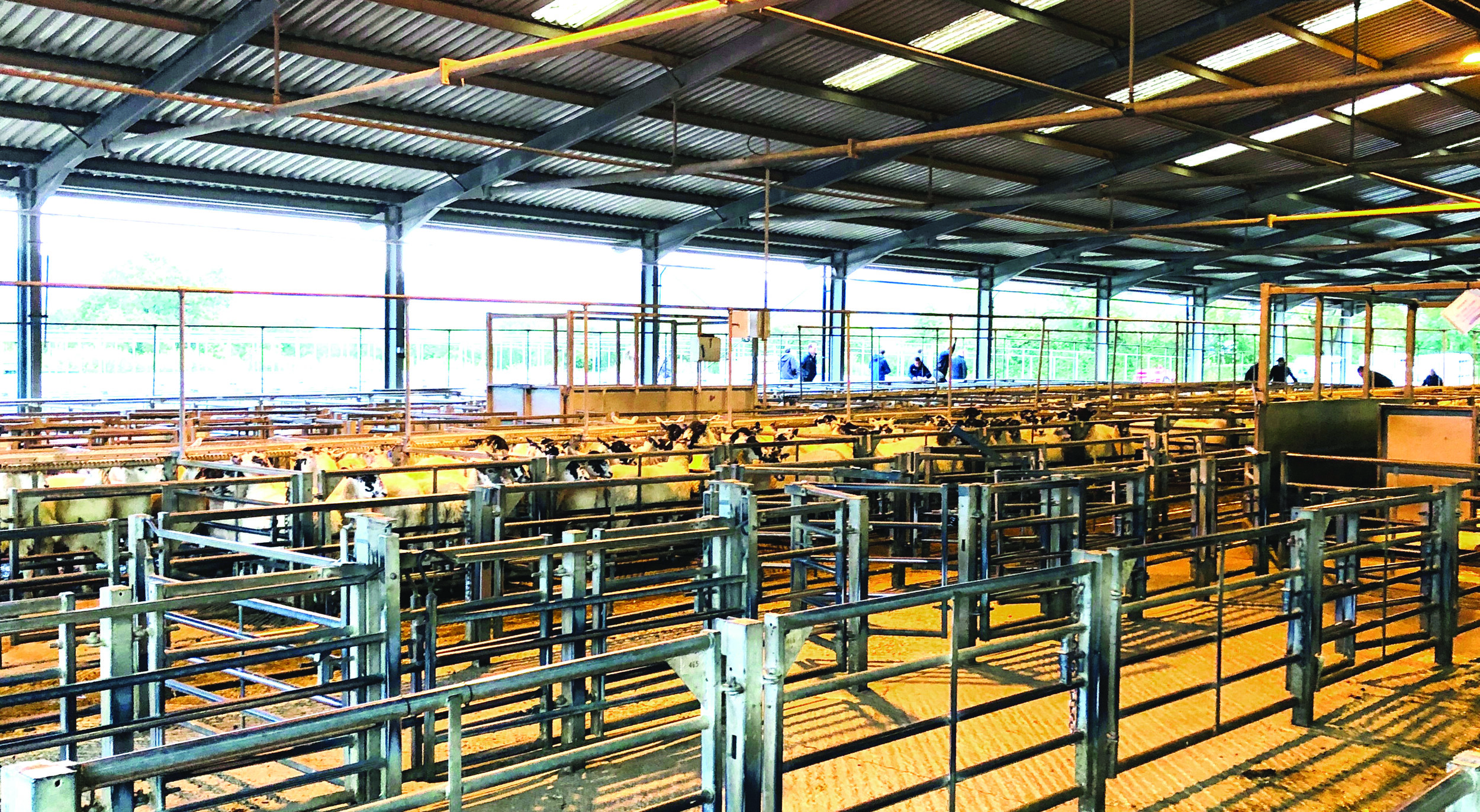Working beef and sheep farm visit highlight of Welsh holiday
/by George Fullerton
Wales is a delightful place to visit if you like a countryside dominated by small fields, lots of sheep, narrow roads, rock walls, hedges, and plenty of old and even ancient built infrastructure, and don’t mind a moist climate.
A visit in October meant fewer tourists on the road, so finding accommodations, food, and drink was easy.
Renting a car allows choice of how fast to get around the country and visiting points of interest. Driving on the left takes some getting used to and roundabouts add an additional challenge. Big trucks and large buses on narrow roads consistently generate a bit of excitement. If your driving pace is relaxed, eventually there is a pull-off to allow native drivers – all of them fast – to pass.
Our Wales trip was an opportunity to explore the concept of a farm stay … since we don’t get enough at home.
Online searches identified numerous farm stay accommodations, but only certain ones were actually identified as working farms. Without a definite itinerary for our visit, we didn’t book ahead.
Rural Wales is very green, with a rolling landscape, save for the Snowdonia and Brecon Beacons national parks, which feature mountainous terrain and deep, dramatic valleys. In early October, there were lots of sheep on the grass and occasionally on the road.
Our first farm stay was a bit disappointing, since the advertised “working farm” was actually an unused farm with only a handful of rams occupying a pasture.
The accommodation was a shepherd’s hut, which provided an interesting adventure. The hut interior measured six feet wide by about 16 feet long, with a double bed at one end and the bathroom (shower and composting toilet) walled off in the opposite end. The main room decor included a counter with a propane stovetop, a small fridge, and a wood-burning stove.
TRUE WORKING FARM
Our search for a second farm stay led us to the Tyddyn Chambers B&B, and it was true to its working cattle and sheep farm advertisement, with a 300-head feeder cattle operation and 200 ewes. Tyddyn Chambers, near the small town of Ruthin, is on the edge of the Clwydian Range, a series of hills and mountains in northwest Wales.
Tyddyn Chambers is a large two-storey farmhouse constructed in the past century, with an older attached outbuilding. It’s owned and operated by Huw and Ella Williams.
Pulling into the farmyard, we were welcomed by Huw, and he quickly introduced us to his brother-in-law as well as a contractor who had his big Fendt tractor hitched to a liquid manure tanker.
Huw is a gregarious soul and was hardly distracted in organizing the loan of his stock trailer to his brother-in-law while simultaneously introducing his contractor and joyfully accusing him of becoming a millionaire at Huw’s expense. It was easy to see that the banter was long practised and enjoyed by all.
Huw’s brother-in-law is a part-time beef farmer and also works for the local council. Huw quipped, “You know, leaning on the shovel along the side of the road.”
The Williams’ feeder cattle are on grass in season and housed in the winter months. They keep 300 head – from days old to their finish point.
Huw, who is a former dairy farmer, purchases bob calves at the livestock auction in Ruthin. The calves have dairy dams (lots of Holstein by their coat pattern) and British Blue, Simmental, and Limousin sires. The more mature cattle in the yard displayed lots of double muscling. The British market is for lean beef rather than the marbling that the North American market demands.
The “shed” (barn) adjacent to the house is divided into pens by steel fence and gates. It houses the youngest calves as well as mature cattle close to finish. A cull Holstein cow serves as wet nurse for new calves, and Huw also supplements small calves with milk replacer. The wet nurse serves until she dries off and then goes to slaughter, after which a new cull cow is purchased at the livestock auction.
Calves are vaccinated against pneumonia upon arrival at the Williams farm.
“Since they left the farm they were born to, they have been on trucks and mixed with other cattle as they were handled through the sale,” said Huw. “So they have been exposed a lot, and the inoculation gives them a fighting chance to get accustomed to our place.”
FEEDING THE CATTLE
The calves remain on milk replacer for 10 weeks. They’re then weaned to a high-protein grower mixed with rolled barley and offered free-choice straw until they’re four to five months old. They’re then switched to silage or go on grass pasture.
Huw said straw is better for the calves until they’re four or five months old, when their rumen really gets working and they can handle silage.
Backing on the loose housing pens is a double alley – former free-stall dairy housing – where 100 larger cattle spend the winter. It has automatic alley scrapers dumping manure into a liquid manure pit.
Observing a shed full of high-density baled straw and asking if the straw was produced on the farm, Huw said, “I am a stockman. I raise beef and sheep and I rely on contractors to produce silage and hay, as well as spreading manure from our operations. We buy in grain feeds and straw.”
Cattle older than three months go out on 200 acres of pasture from April through to early November if the weather cooperates. The youngest calves continue to get high-protein mixed feed while on pasture.
A large bunker silo contains the major winter feed supply. Huw said the quality of his silage hadn’t changed since switching from dairy to beef cattle.
“High-quality silage is just as important when producing beef,” he said. “We contract the silage and store it in the bunker, which is a lot more economical compared to bale silage. We book our contractor when we expect the forages to be at their prime and then we hope for good weather so that it gets harvested and stored away. This year, we did well. We have very good quality. When the weather does not cooperate, we might have a larger volume, but not as good quality. We always do some bale silage, which we store near the shed and feed out in the sheds or to supplement pastures.”
Huw said that he raises steers and some females to the point that he described as “looking their best.” The cattle are sold through the Ruthin livestock auction and purchased by operators who will finish them on a finishing ration. Hauling cattle to auction and buying in new calves continues throughout the year.
Questions about the auction resulted in an invitation to go along with the delivery of four animals the next morning.
SHEEP OPERATION
The Williams’ sheep operation is carried out on a separate rented farm. It’s stocked with 200 Suffolk cross “mule” ewes. The term “mule” in British sheep farming refers to a cross between a lowland ram and a purebred hill or mountain ewe.
Pregnant ewes are scanned in mid-November. Any carrying twins or triplets get protein supplements until lambing.
In mid-January, the lambing gets underway inside. The ewes and their lambs go outdoors two to three days after lambing. The ewes get bale silage at lambing and continue to be fed forage outdoors for a couple of months until the pasture starts.
Following the farmyard tour, we met Ella, who is a warm and informative hostess.
The two-storey house has been extensively renovated and accommodates eight guests. Our room, with ensuite bathroom, was tastefully decorated and provided a splendid view of the calf pastures and the hilly countryside.
For our supper, we were directed to a number of places in Ruthin, which has a central square, historic buildings, narrow and winding streets, and plenty of eating establishments.
Border Collies welcome visitors to the Williams farmyard, and at least one accompanies Huw as he works. He explained that one of their four dogs was for sale, and pointed out that one named Tess had mothered 24 pups to date.
When asked if he trains the dogs, Huw said, “God, no! Sioned does the dog training.”
Sioned (pronounced “Shon-ed”) and Llinos are the Williams’ daughters. Sioned works at a veterinarian office in Ruthin and Llinos is a teacher and mother of two children.
Sioned also helps Ella and Huw at lambing time and she takes care of the farm when her parents go on holiday.
“At the veterinarian service, Sioned is the one who takes the calls from the farmers and tells the vets where they have to go and what the call is about,” said Huw. “She likes to talk with the farmers and she understands what they need the vet for, and she enjoys the work a lot. I expect she will be the farmer when I stop.”
FUN AUCTION RUN
For the early morning auction run, I got a lend of Huw’s rubber boots and stood where told as he loaded four 1,000-plus-pound animals on his Ifor Williams livestock trailer pulled by his Toyota Hilux pickup truck. The cattle were easy to sort and load, with one Welsh stockman, one Border Collie, and one Canadian tourist just standing strategically by.
Commenting on my struggle driving the narrow lanes, Huw quipped, “No worries, plenty of room for everyone,” as he used the entire width of the twisting lane.
Driving in Wales is complicated by having all traffic signs in Welsh, with English translation seemingly an afterthought. They also make a particular point of not having very many traffic signs. Regardless of the travelling challenges, the Welsh are friendly and glad to help lost travellers find their way.
Huw said Ruthin had historically been a market town, and continues to be a major agriculture centre, with equipment dealers, vets, and other ag services, in addition to the livestock auction operation.
The large livestock sale building was busy for our Oct. 10 visit. A number of area farmers invested in the livestock auction business when it was reconstructed some 25 years ago, and they now hold shares in the operation.
The autumn sales will bring 50,000 sheep and 4,000 feeder cattle through the auction facility. The livestock sale we attended featured 3,800 sheep (breed stock and market) and 385 cattle. Most of the livestock come in from within 30 miles of Ruthin.
Huw explained that putting cattle through the auction requires lots of paperwork. He books specific animals prior to delivery at the sales barn. He said each animal requires a printed “passport.” The information includes identification numbers corresponding with ear tags, and a history of the farms and sales each animal had been at from birth.
The auction facility includes a café, which Huw said is “where all the real business gets covered.”
A TASTE OF WALES
Back at Tyddyn Chambers, Ella announced that our traditional Welsh breakfast was being prepared.
The breakfast conversation came around to the family’s participation in choirs. In addition to learning the Welsh language through grade school, the tradition of choral singing is also a significant part of the education system in Wales. For a taste of Welsh singing, Ella put on a CD featuring Huw in his barbershop quartet.
Our third farm was hosted by Ceinwen Nixon of Brynhir Farm in the community of Llandrindod Wells in Mid Wales. The Nixons operate a sheep and cattle farm. They have a bed and breakfast in their beautiful old stone farmhouse and also have a self-catering cottage nearby.
The Nixons were excellent hosts and suggested that we plan our next trip to Wales to coincide with the Royal Welsh Show, which takes place near their community in July. Unfortunately, we were scheduled to return our rental car the following day, so there was only limited time to see the farm and the neighbourhood.
If a visit to the British Isles is in your plans, farm stays are a great way to see and engage with rural and farming communities. The rates are fair and the breakfasts are excellent.

